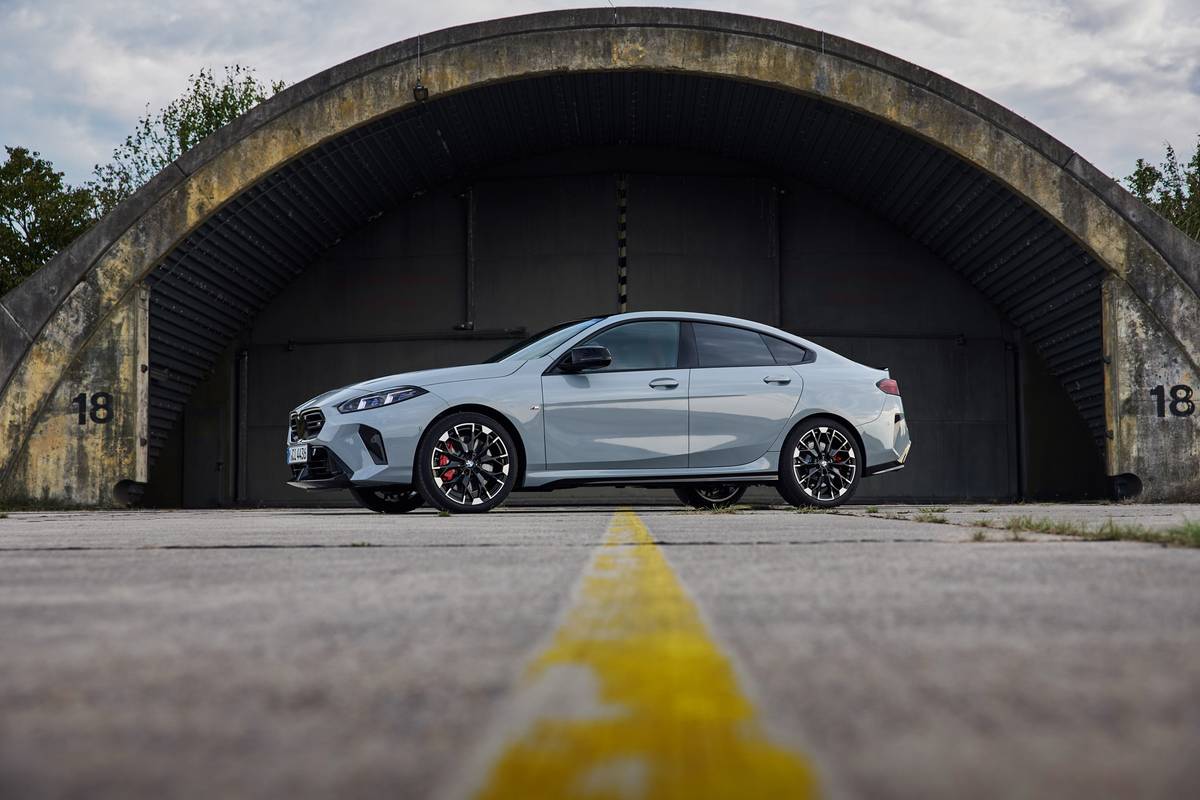The Morning Call and Mcall.com's view
In the beginning was the 1964 1/2 Mustang, the original pony car. It was followed by Camaro, Firebird, Barracuda, AMX, Karman Ghia, Celica, Prelude, Capri, EXP, Turisimo, Laser, Charger, Challanger, Fiero, Scirocco, MR2, 200SX, RX7, Impulse, Starion and many others who entered the small sporty-car market.
This particular market is one of the most competitive segments of the industry. There are more than 30 small sporty-car lines competing for only 11 percent of the total car market. Back in the old days, Mustang, understandably so, had the corner on the market. But what is it doing now with all of the competition? Well, it is not only surviving, it is thriving. In 1986, it was the best seller in its class. And it accomplished this with an eight-year-old basic body design.
For 1987, it still has the same body; but like Dorian Gray, it just never seems to age. This year’s Mustang GT looks better than ever. And this was accomplished by clever executed ground effects and a little reshaping of sheet metal. A extra bunch of horses under the hood certainly doesn’t hurt the Mustang’s performance image either. All-in-all, a dandy package that can hold its own against anything on the road; and at what can be considered a reasonable price.
The GT convertible test car had a bottom line of $18,337, which certainly doesn’t seem very cheap. However this is the top-of-the-line Mustang, other models are less expensive. For example, the base price of the Mustang GT hatchback is $12,106 and this is about the biggest bang for the buck you are going to get.
Gone from the Mustang lineup this year is the short-lived SVO, a very interesting intercooled turbocharged car that Ford managed to hide from the public. However, the SVO lives on – the Turbo Thunderbird got its running gear and the Mustang GT some of its styling, most noticeably, the grill-less look up front. In addition, the above mentioned ground effects – front and rear fascias, front air dam, integrated fender extensions with air scoops – give the car a look of an expensive sport car. And it is a convertible that looks good with the top up or down.
Looks are just part of the whole package; the GT’s performance is even more impressive. Here is a factory muscle car that can outrun all but a handful of much more expensive cars. Not really a lot of finesse involved here. Stomp on the accelerator from a dead start and tires squeal and rubber is laid down – sometimes even when it is not intended.
But, then, why not? Under that sloping hood is a remnant of those halcyon days of high horsepower and cheap gasoline: the American short stroke, overhead valve V-8. This performance version of Ford’s venerable 302 cubic inch V-8 is known as the 5.0L EFI HO V-8 and it pumps out a very impressive 225 horsepower at 4,000 rpm and 300 foot pounds torque at 3,200 rpm. This is up 25 horses from last year’s engine and responsi ble for the increase is a modified induction system and new cylinder heads. Some other features include sequential multiple-port fuel-injection, high performance camshaft, low friction roller tappets, forged aluminum pistons, stainless steel tuned tubular headers and large diameter dual exhausts.
The test car was equipped with a five-speed manual transmission (standard, a four-speed automatic is an option) that proved to be a perfect match for a powerful engine. This is definitely not a combination for a learning beginner. The clutch is heavily sprung and quite sensitive. If the start is not done right, the GT will either stall out rapidly or leave a streak of rubber. But if you get it right, it is awesome. How does 0-60 in a little over six seconds grab you?
With all of this performance, a logical conclusion would be that fuel mileage is terrible. Well, it will be with laying rubber and doing fast 0-60s, but if things are kept reasonable, mileage can beq ite decent, especially when cruising the highways. On e thing about a V-8 is that is doesn’t take much rpm to get up to power. For example, at 55 mph in fifth gear the GT is only turning over about 1,300 rpm. Now this isn’t much above a fast idle. So, when all was said and done, the test car averaged 14 miles per gallon for city driving and 24 mpg over the highways. Unleaded premium must be used.
The GT’s suspension is based on MacPherson struts up front and a four-bar link design in the rear. Everything, as can be expected, is tuned to handling all those horses. The stabilizer bars are larger, the shocks and struts gas- pressured, the springs stiffer and the rear features Ford’s Quadra-shock set-up. Big P225/60VR 15 unidirectional Goodyear Eagle performance tires keep it to the road. The ride is stiff but the handling is great. No delicate moves here, just manhandle it through curves, corners and cloverleafs.
So far, everything is impressive. Slipping behind the wheel and looking at the dash, though, is somewhat of a letdown. With all of this performance and handling, one would expect a sporty instrument panel. Instead it is rather mundane looking and would look more in place on an economy car. All the instruments are there but they just look so cheap. And adding another insult to injury is an uninspiring speedometer that only reads 85 miles per hour. Even economy/sporty cars these days have 120 mph speedometers. Once over the initial disappointment of the instrument panel, the rest of the interior isn’t bad but it is a long way from dazzling.
With a wheelbase of 100.5 inches, length, 179.6 inches; height, 51.9 inches; width, 69.1 inches, and curb weight, 2,921 pounds, the GT convertible is not a large car. However, because of the necessity to cut into the rear seat and trunk for the convertible top, interior room is even smaller than it looks. This is the way it has always been with convertibles.
The two front bucket seats will accommodate most people. The rear seat has been cut down in width and leg room and is best suited for children and/or small agile adults. The trunk measures only 6.4 cubic feet; wisely a trunk deck luggage rack is standard. Another thing that hasn’t changed in the convertible from the old days is that they are noisy on the road. Even with top and windows up, the noise level at highway speed makes it difficult to listen to the radio. But, again, it goes with the territory.
As mentioned, the test car had a price tag of $18,337. The base price for the GT convertible is $15,852 and includes all of the performance items and a nice level of standard equipment and trim. Options on the test car included: climate control group (air conditioning and premium sound system) $956; special value group (power locks, AM/FM electronic stereo cassette and speed control), $519; leather sport seats, $415, and power side windows, $296.
The Mustang GT is covered by a 6-year/60,000-mile powertrain warranty (restrictions and deductions apply) and a 6-year/100,000-mile warranty for body panel rust-through.
Latest news



